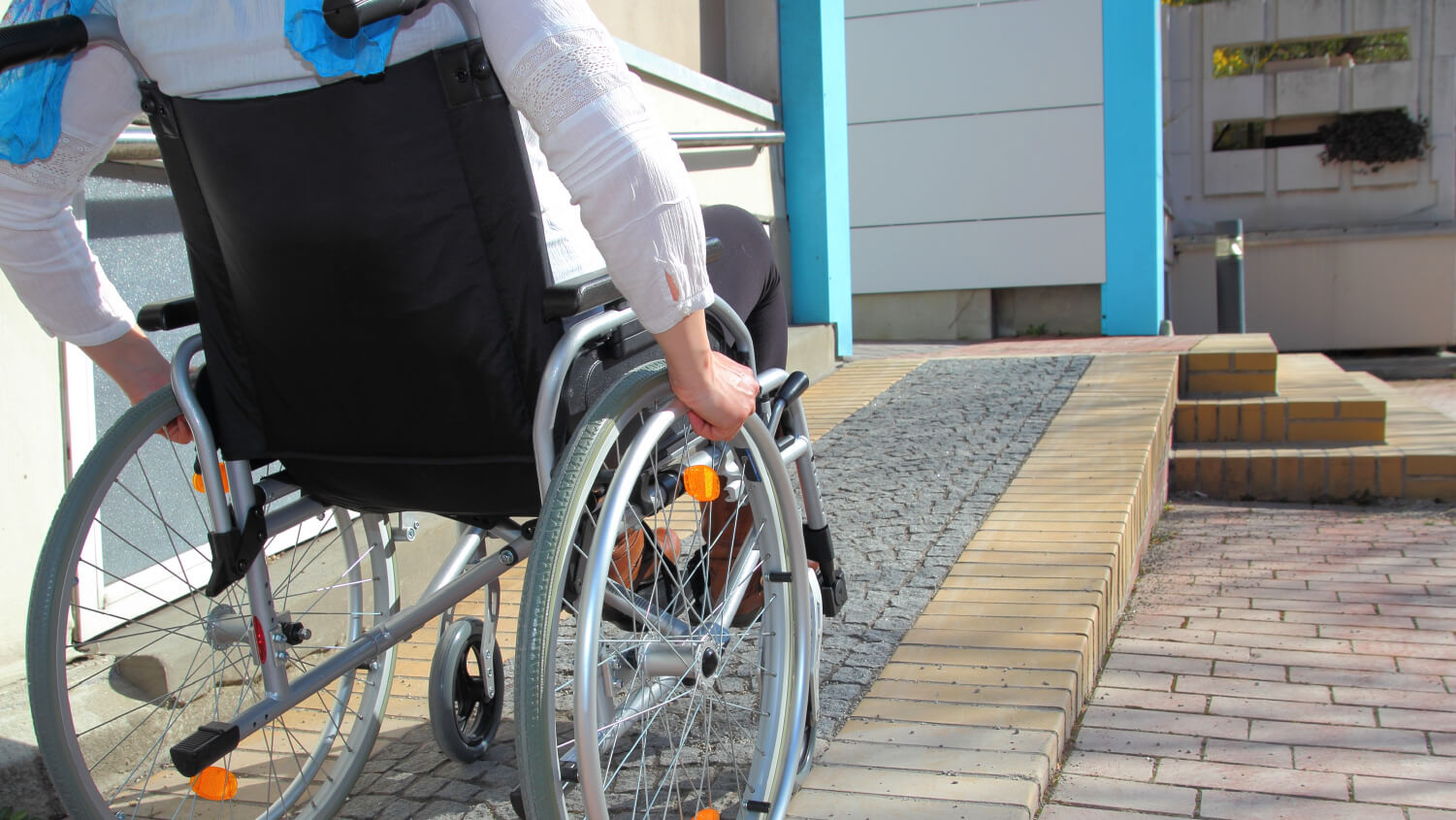
Discover wheelchair ramp cost estimates, including installation, materials, and tips to save. Learn what impacts your price and how to budget for your project.
Turn trash into treasure with a little bit of elbow grease
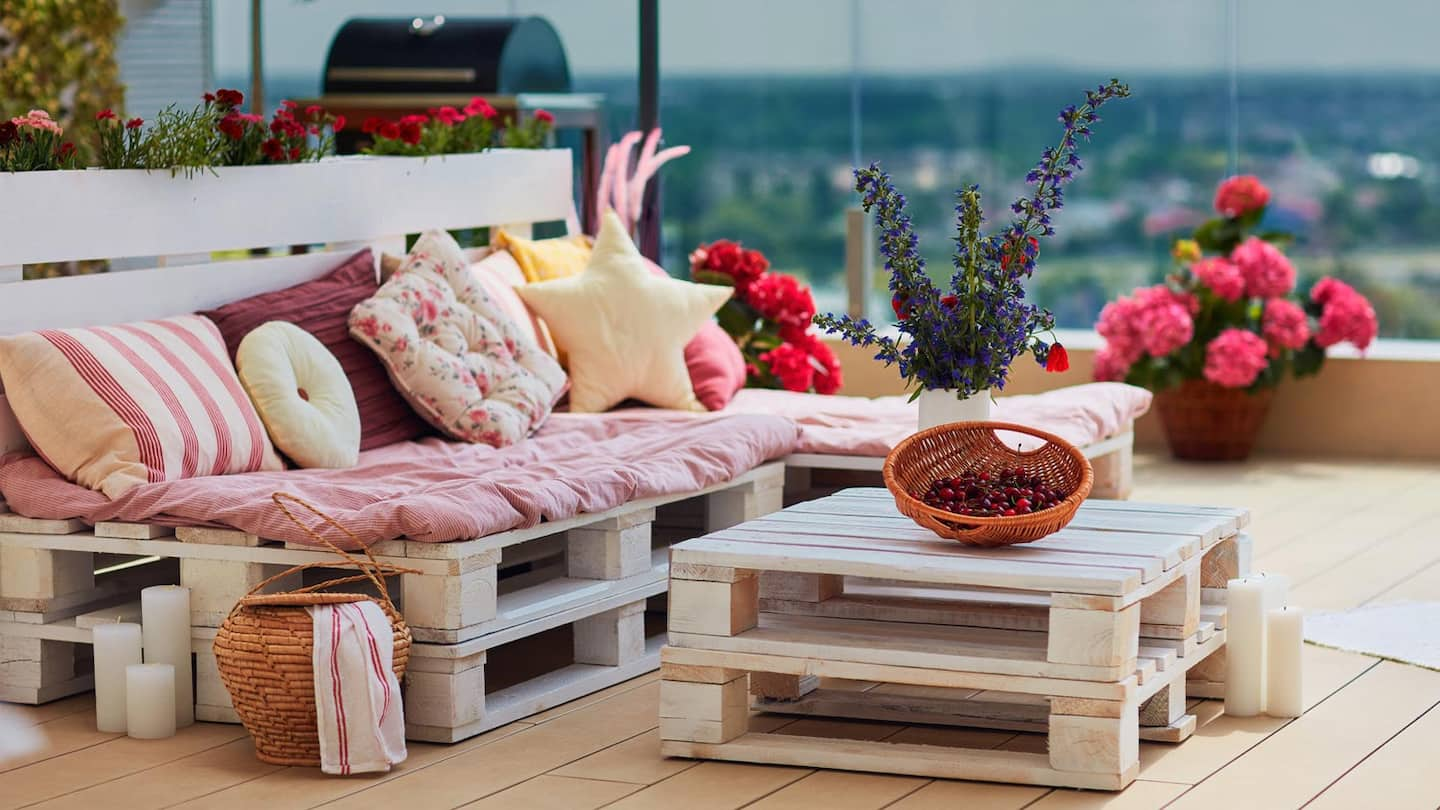

Chances are, you could have the makings of rustic outdoor furniture and decor lying around your garage. Enter pallets, a DIYer’s secret weapon.
To enhance your yard and patio, repurpose these wooden crates into vertical gardens, bike racks, potting benches, wall art, outdoor dog beds, and more. Read on for a few quick and fun project ideas for DIY pallet furniture.
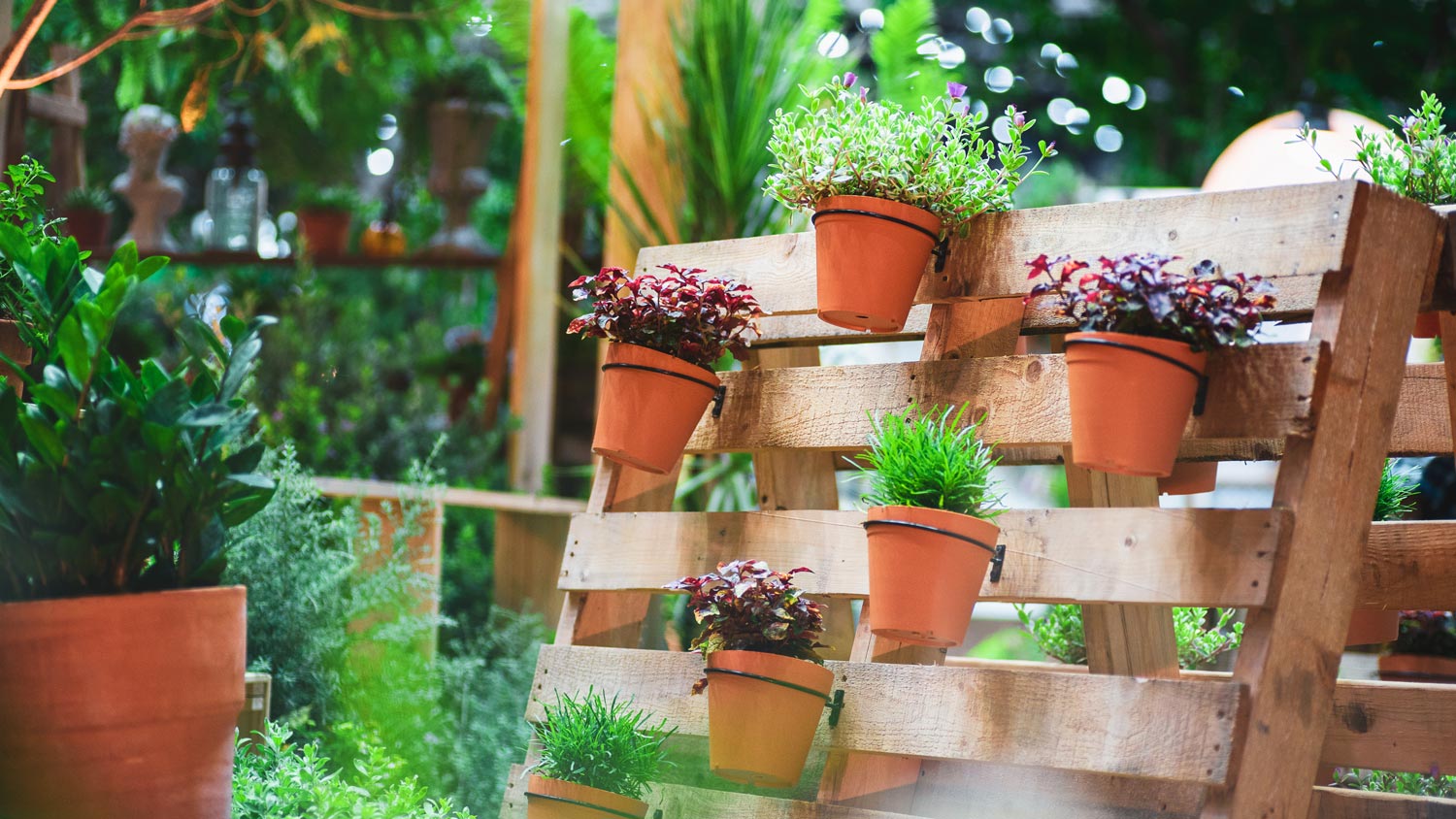
If you’re short on growing space, create a vertical garden for flowers and small vegetables as DIY pallet decor.
Cut landscape fabric to the size of your pallet
Wrap the fabric around the sides of the pallet and staple it on
Attach fabric until you cover the entire bottom of your pallet
Lay the pallet on the ground and fill it entirely with potting soil
Add your plants to the areas between the slats
Leave your garden horizontal for a week, watering it regularly
Lean the garden against a wall and continue to water plants on a regular basis
As an alternative, you can also make a DIY vertical garden featuring pots.
Attach screws and clamps to an old pallet
Secure your pots to the clamps
Add soil and a plant to each pot
Water your plants regularly
Craft a DIY pallet bike rack with enough storage for five or six bikes. You’ll need a pallet with boards spaced far enough apart to accommodate bike tires.
Remove splinters and old nails, which could damage tires
Cut your pallet in half along the side of the supporting beam in the middle
Place an additional supporting beam between the two sides of the supporting planks
Stack the other half of the pallet on top to make sure that the two pallet halves line up
Put the loose planks in place while nailing them down
Nail the bottom planks as well
Add an additional supporting beam to the back of the pallet
With two 90-degree wood brackets, attach the two pallets
Add supports by nailing more planks to the sides
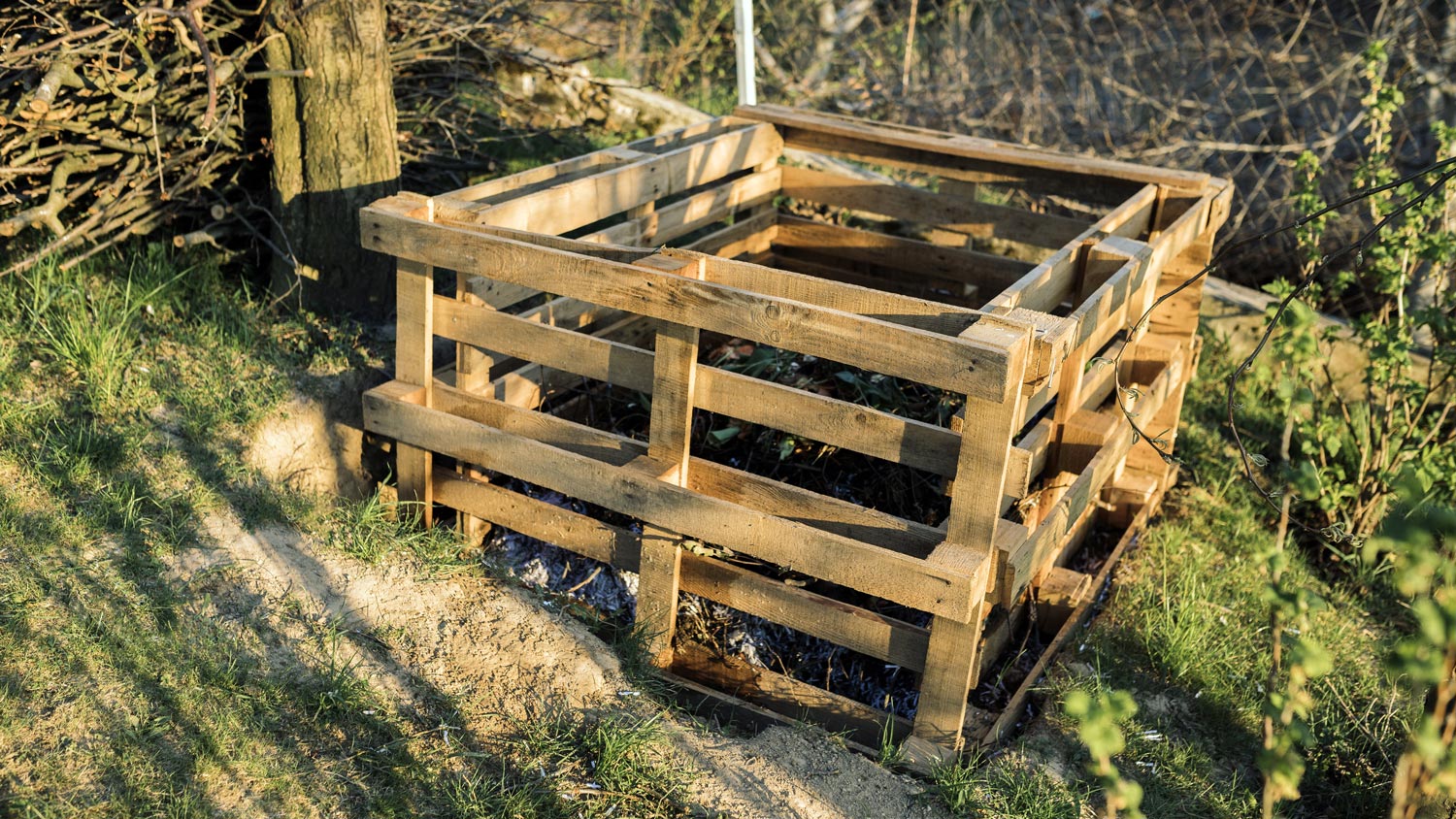
Add a stylish element to your outdoor space while producing compost to nourish your plants. For the ultimate set-up, create a three-bin system to always have compost at three stages: new, in-process, and finished.
Start with seven rot-resistant hardwood pallets, all the same size. You’ll also need a drill and 3-inch all-weather deck screws. Begin assembly on the level surface you intend to use for your compost bins.
Attach one pallet (for an outer sidewall) to another (part of the bin’s back side).
Add an inner pallet (to serve as a divider), screwing it against the first back pallet. When attaching this inner pallet to the backside, offset it.
To establish the middle section of the backside, add another pallet and attach it to the pallet you added before.
For the four pallets that remain, work your way across in the same fashion to create the other two sections.
Enhance your patio with a rustic, farmhouse-style table that will mesh well with your hanging garden.
You’ll need two of the same size pallets, four metal casters, wood varnish or lacquer, and short and long screws to create this DIY pallet furniture project.
Remove the bottom planks from one of the pallets (which will ultimately be the top of the table).
Using a band, circular, or hand saw, cut the boards you just detached to make narrow planks to fill in the gaps between the spaces on the top pallet. Screw the narrow planks into the top pallet.
Stick the two pallets together using PVA or wood glue and long screws.
To attach all-metal caster wheels, mark and pre-drill holes for the screws (these should have hex heads).
Finish the table with acrylic lacquer or varnish.
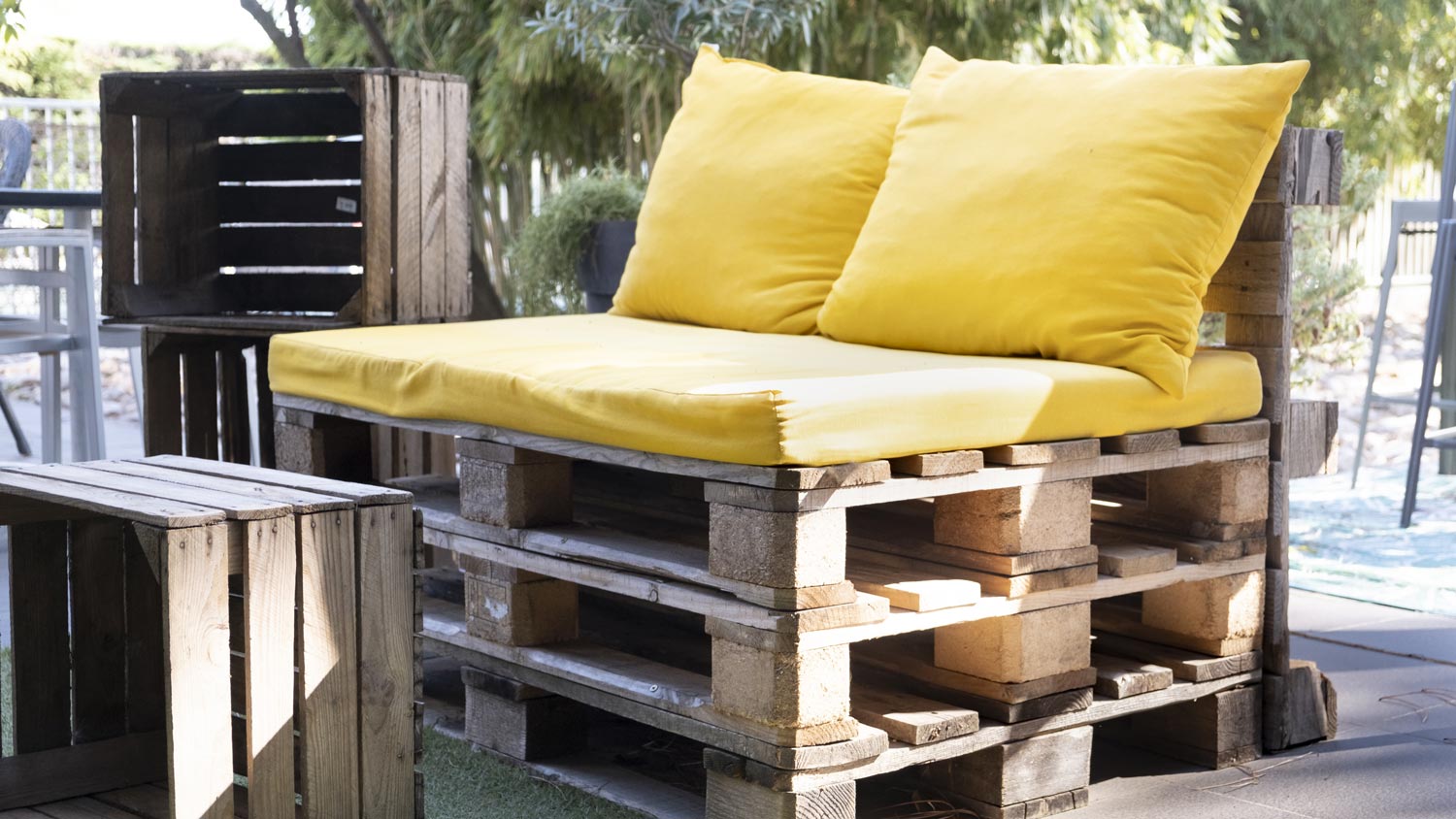
To accompany your new coffee table, make a bench.
For this DIY furniture project, you’ll need a pallet (ideally with slats 1/2-inch-thick), an 8-foot-long pressure-treated 2-by-4, and a box of star-headed, no-drill-needed 2 1/2-inch deck screws.
Turn the pallet into a back and bench seat. Make the back by measuring, marking off, and cutting. Leave the remaining (longer) pallet section laying flat.
Stack the new back section vertically on top of the longer section, which will serve as the seat.
Cut the 2-by-4 into four pieces to serve as the legs and armrest supports.
Attach the legs to the bench, drilling into the sides of the seat bottom back.
With other pallet slats, create the armrests. Drill in with screws to attach.
Construct a shelf to hang over a potting bench.
You’ll need one pallet wood length, one old wood fence paling, and clear satin varnish.
Cut a wide pallet slat to your desired shelf length.
Cut fence paling into strips to form trim for the front and both ends of the shelf.
Using wood glue and screws, attach this trim to the pallet slat.
Hang your shelf and use it for potted plants and lightweight garden supplies.
Fortunately, pallets are abundant and cost-free. If you don’t have any handy, call your local garden supply, hardware, grocery, or appliance store (or another retailer that carries large items). Ask if they’re willing to give away any assembled or disassembled pallets.
If you can, seek out crates and planks made of rot-free hardwood (like pecan and cedar). These pallets will hold up best in moist outdoor environments.
Also, look for pallets with as few splits, cracks, and nails as possible. Since pallets are often treated with toxins, you’ll want wood stamped with the International Plant Protection Committee (IPPC) or European Pallet Association (EPAL) logos.
Ideally, you’ll also see the letters “HT” (heat-treated). Because of potential toxins, insects, and mold, it’s wise to restrict pallet projects to outdoor use.
When sanding and cutting, wear a respirator and safety glasses to protect yourself from toxins. You’ll also want to put on gloves to avoid getting splinters.
Since you will most likely need to disassemble pallets to yield individual planks, watch out for rusty nails.
From average costs to expert advice, get all the answers you need to get your job done.

Discover wheelchair ramp cost estimates, including installation, materials, and tips to save. Learn what impacts your price and how to budget for your project.

Looking to add a personal touch or some patriotic flair to your property? Learn about flagpole installation costs and how to budget appropriately.

Find out how much it costs to build a chicken coop—whether you've got a few hens in your backyard or a big, self-sustaining flock—with our expert guide.

A handyperson has the best home improvement tips, tricks, and hacks. We share advice that will help you put a handyperson’s touch on different DIY projects.

For homeowners who struggle to keep up with household chores, or those whose health prevents them from doing certain tasks, hiring help with chores around the house can be a huge help.

Before starting a project, it’s important to decide whether you buy or rent tools. The best option will depend on what you’re doing and the project magnitude.